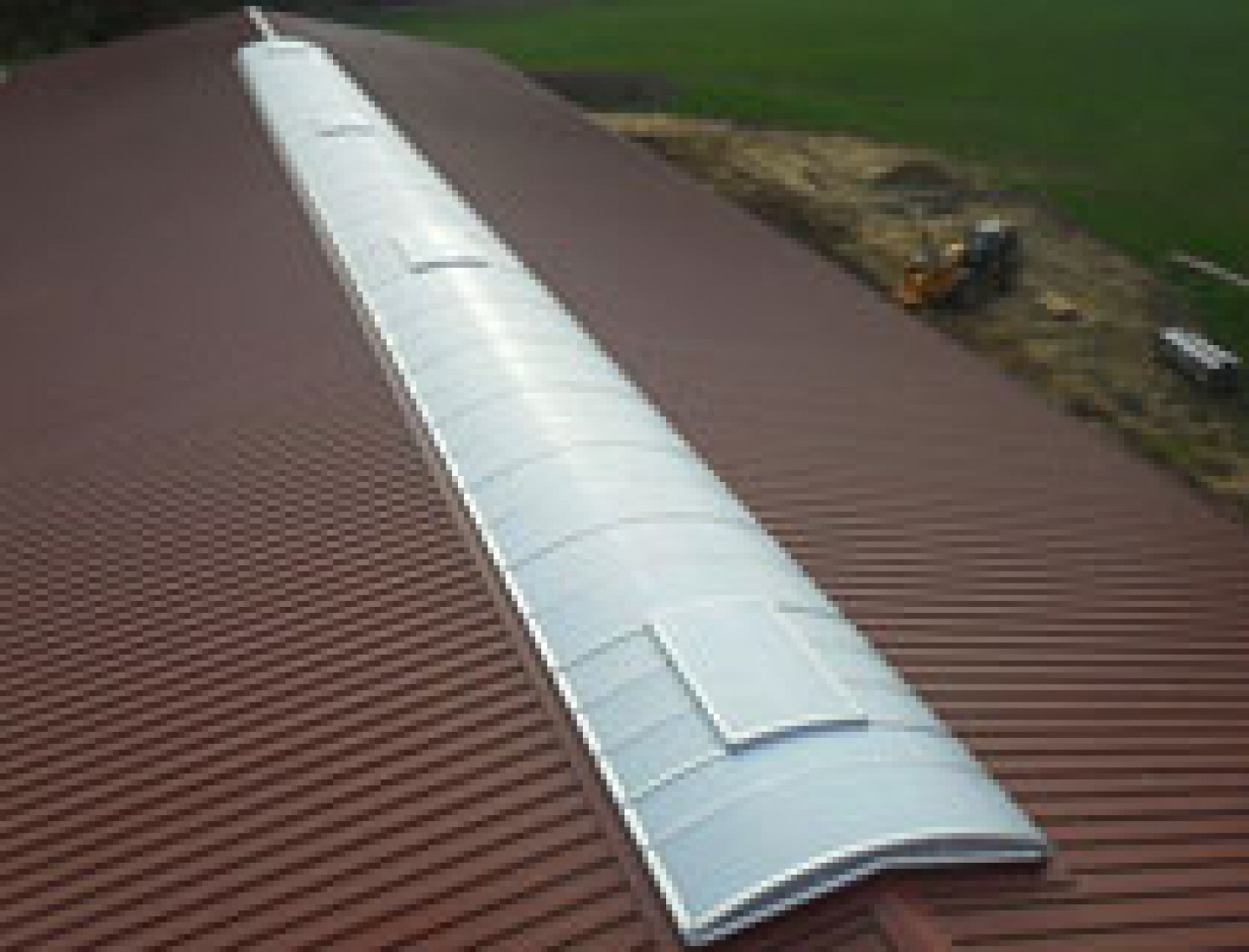This article sets out to explain what this certification means and why it sets our continuous rooflight apart from other products, meaning you can confidently specify and install our rooflights.
Rooflights are a classic solution for industrial units and facilities. They are designed to guide daylight into building interiors and provide natural ventilation and reliable smoke and heat extraction (SHEV) with their integrated flap systems. However, as with all structural elements used in contemporary buildings, one factor is a top priority in skylights: energy efficiency. Lamilux, a manufacturer of premium quality daylight systems, SHEV systems and control technologies, has now brought onto the market the first daylight structure with tested and certified heat insulation values: the CI System Continuous Rooflight B.
Certification means that all thermal bridges have been eliminated in the CI System Continuous Rooflight B. Depending on the configuration installed, this continuous rooflight is able to achieve a Uw value as low as 1.7 W/(m²K). The system also features a European Technical Approval, for which LAMILUX demonstrated that the component has excellent heat insulation values.
With CI System Continuous Rooflight B, LAMILUX is the first European manufacturer to develop a continuous rooflight which meets European technical standards and is thus approved for use throughout the EU. Issued by the European Organisation for Technical Approvals (EOTA), the approval constitutes a recognised certificate verifying suitability for use in EU member states. It is awarded after products pass comprehensive tests on inherent characteristics such as stability, heat insulation, sturdiness and durability. Approved with certificate number ETA-09/0347, LAMILUX CI System Continuous Rooflight B has successfully proven its technical and energy-efficient qualities during these tests.
A full PDF copy of the EOTA certificate can be view here: ETA-09/0347
Free of thermal bridges thanks to thermally decoupled base profile
LAMILUX was able to meet stringent energy efficiency requirements while developing its CI System Continuous Rooflight B by focusing on heat insulation characteristics. It has produced a thermally decoupled base profile for its continuous rooflight system. “Until now, the base profile in continuous rooflights was made of metal. However, such a material also created a significant thermal bridge,” explains Enrico Penzel, an engineer who was closely involved in developing the new continuous rooflight. If you replace a metal profile with a thermally decoupled, purely composite one, you may be able to eliminate the thermal bridge, but then you might have problems with the structure. “The challenge was now to combine the absence of thermal bridges with a sturdy structure while improving both these qualities.”
A continuous rooflight for optimum energy efficiency
The development process resulted in a metal tension bracket held in place by a composite base profile. Integrated into the base profile is the Isothermal Load Converter (ITL), which channels the load on the continuous rooflight into the supporting structure while ensuring optimum isothermal characteristics, thus guaranteeing maximum heat insulation. This structural element also greatly reduces the risk of condensation forming on the structure's surfaces, unlike conventional, non-thermally separated structures. The ITL enables the rooflight’s base profile system to achieve a Uf value as low as 1.3 W/(m²K). According to the approval, thermal insulation values as low as 1.6 W/(m²K) are possible for the rooflight as a whole. CI System Continuous Rooflight B is thus synonymous with optimum energy efficiency.
Maximum values for structural stability and smoke extraction
Besides heat insulation values, LAMILUX has also optimised numerous other relevant product parameters in its continuous rooflight system. For example, design variations are available to withstand snow loads up to 3.9 KN/m² and wind suction loads up to 3.3 KN/m². LAMILUX also attaches great importance to the stability of sheet steel upstands, the steel grade of which is certified in compliance with the DASt 016 guideline recognised across Europe. This ensures that the structure is strong enough to withstand mechanical stress.
Optimum resistance to storms is also assured in flap systems thanks to the patented Dynamic Torque Control (DTC) technology. With the help of a spring system, polycarbonate glazing is mounted in flap frames in such a way that tensioning is optimised. When subjected to high stress, the polycarbonate sheets remain perfectly secured, as the impact from wind loads is optimally absorbed and dampened.
Intelligent energy management
“With the new CI System Continuous Rooflight B, we have developed a daylight system for intelligent, sustainable building management which is breaking ground in terms of energy efficiency and structure,” affirms engineer Joachim Hessemer, Technical Manager at LAMILUX. LAMILUX provides a quality certificate verifying these characteristics, which it hands over to each customer as their system is delivered. “This document enables us to provide our customers with proof of the excellent quality in the supplied product each time that we deliver. The certificate confirms that the daylight system is manufactured and installed in compliance with the EOTA approval and the technical standards specified in the approval.”
To ensure compliance with these standards, LAMILUX pays extremely close attention to strength when selecting materials. High-grade aluminium profiles, stainless steel hinges and a hard PVC frame ensure stability while EPDM seals provide optimum air-tightness. The type of glazing is selected according to customers’ needs, with customers choosing between soundproof glazing, or highly chemical-resistant glazing made of unsaturated polyester resin GRP, for example.
